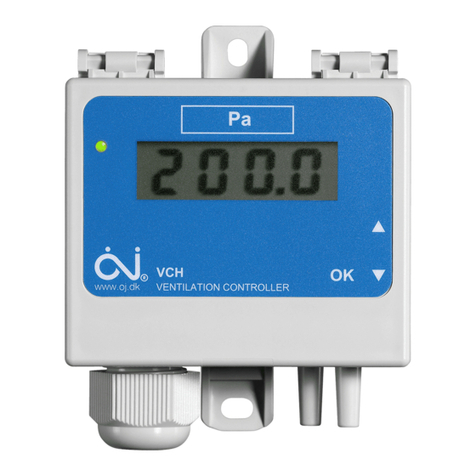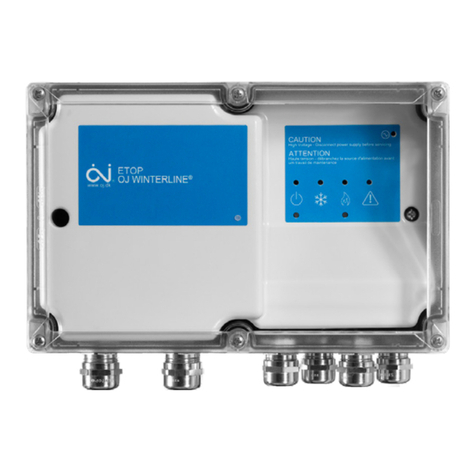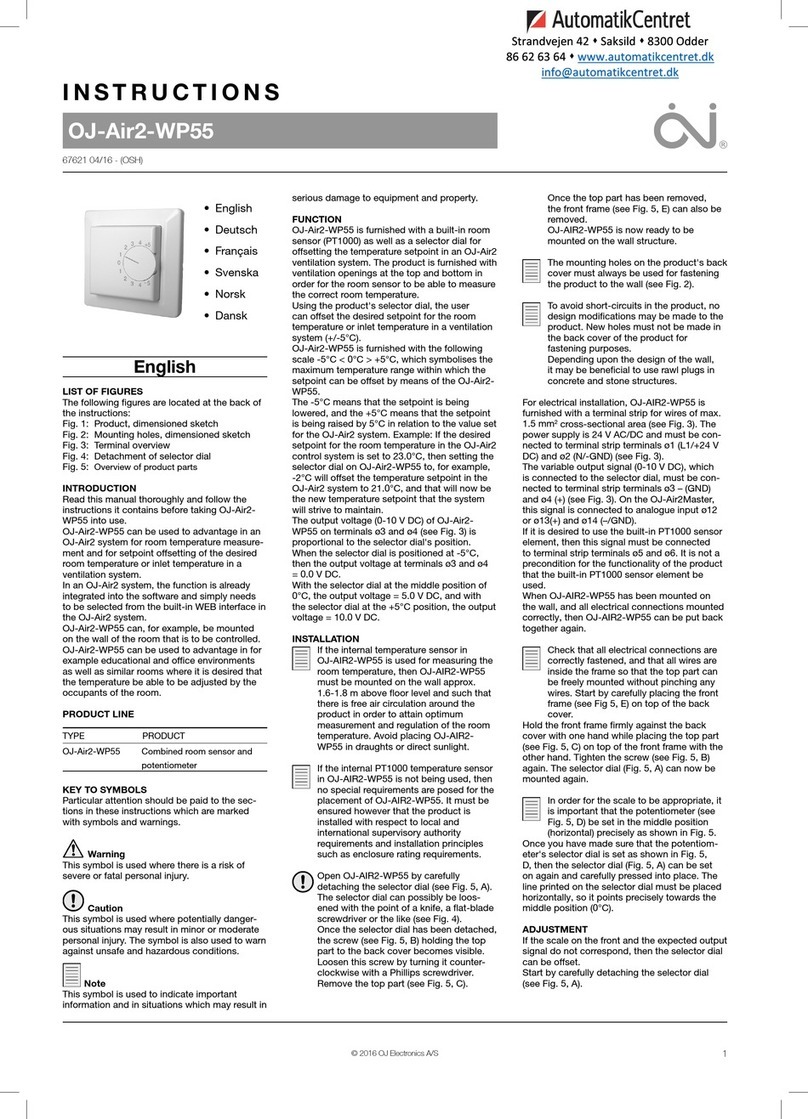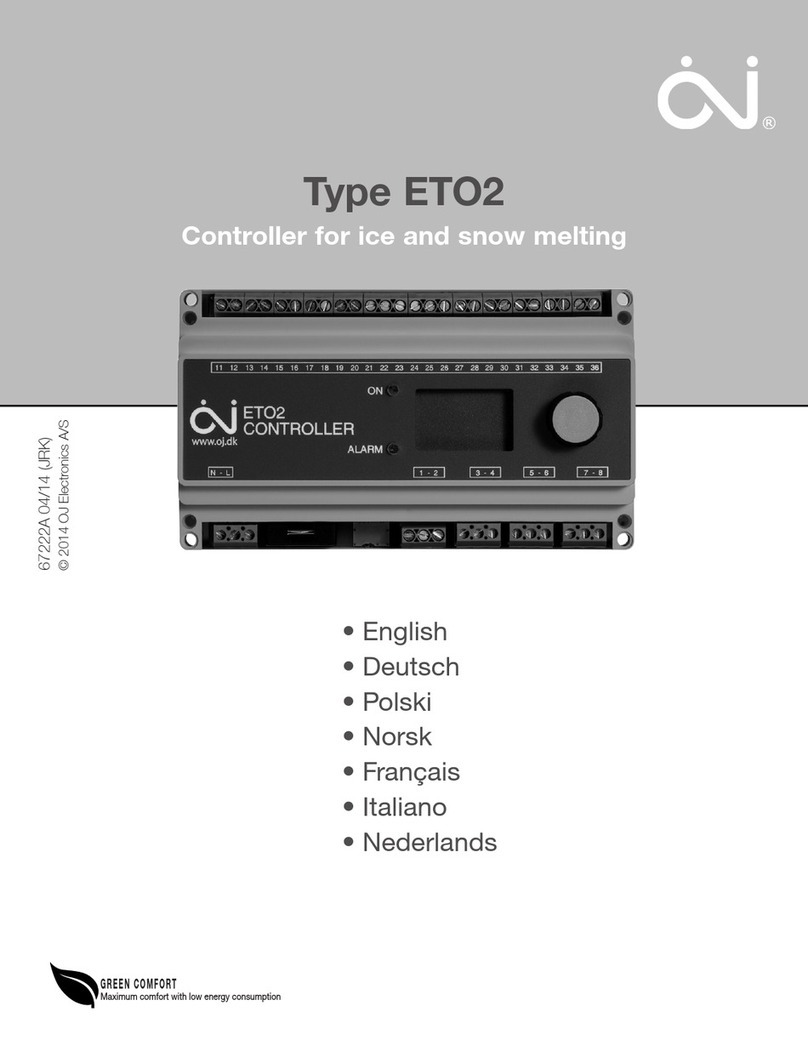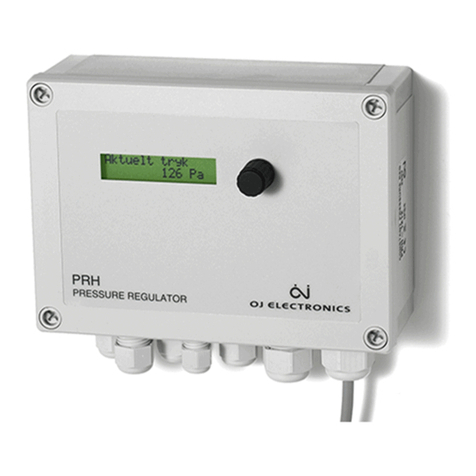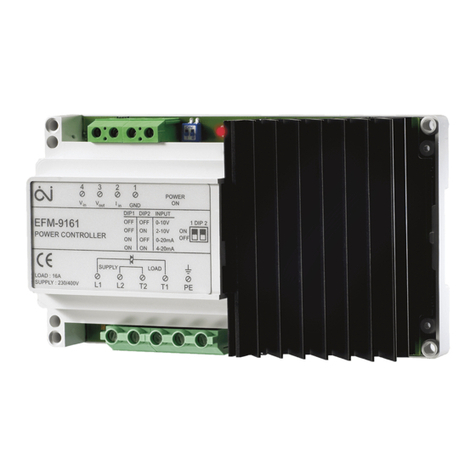
© 2016 OJ Electronics A/S 2
INSTRUCTIONS OJ-DV
Contents
1. Product presentation ...............................................................3
2. Introduction ......................................................................3
3. Key to symbols....................................................................3
4. Ensuring safety before installation .....................................................3
5. Product use ......................................................................4
6. Prohibition on use .................................................................4
7. EMC – Electromagnetic compatibility ..................................................4
8. Approvals and certifications..........................................................4
9. Product programme ................................................................5
10. Rating plate ......................................................................6
11. Exploded and dimensioned drawings ..................................................7
12. Mechanical installation..............................................................9
13. Electrical installation...............................................................10
13.1 Dangerous induced voltage (Windmilling) ........................................10
13.2 EMC-compliant installation ...................................................10
13.3 Short-circuit protection - Power supply..........................................10
13.4 Personal protection - use of RCD’s (TT-system), direct current (AC/DC) risk .............10
13.5 Potential equalisation........................................................11
13.6 Grounding hazard (PE) leakage current hazard ....................................11
13.7 Cable requirements .........................................................11
13.8 Opening the OJ-DV .........................................................12
13.9 Cable entries – cable glands – strain relief .......................................12
13.10 Spring terminals............................................................13
13.11 Terminal and connector overview ..............................................13
13.12 Motor connection...........................................................13
13.13 Mains voltage connection ....................................................14
13.14 Modbus connection.........................................................14
13.15 A/D control signal connections ................................................15
13.16 Closing of OJ-DV ...........................................................16
14. Checklist – mechanical and electrical installation ........................................17
15. Hand terminal (Hterm) – connection and functions .......................................18
16. PCTool – connection and functions ...................................................18
17. Optional modules – connection and function ...........................................18
18. Functions .......................................................................19
18.1 Analogue/digital control......................................................19
18.2 Modbus control ............................................................19
18.3 Switching frequency ........................................................19
18.4 Braking power .............................................................20
18.5 Fire mode ................................................................20
18.6 Frequency converter mode – for asynchronous motors ............................20
18.7 Electronically commutated mode (EC mode) – for PM and BLDC motors ...............21
19. Built-in protection ................................................................22
20. Alarms .........................................................................22
21. Modbus addressing of OJ-DV ......................................................24
22. Maintenance.....................................................................24
23. Troubleshooting ..................................................................25
24. Disposal ........................................................................27
25. Technical specifications ............................................................28
